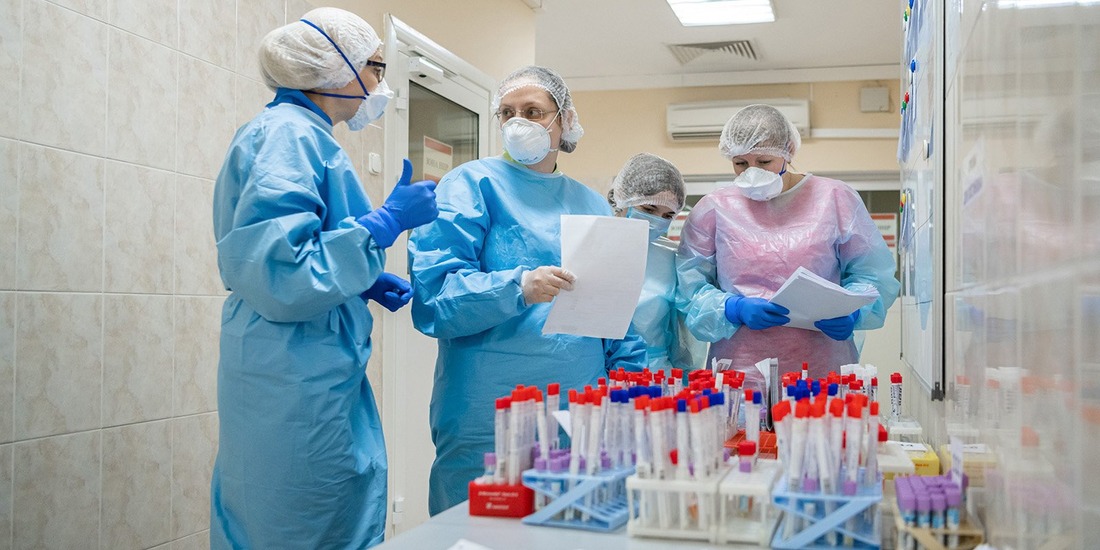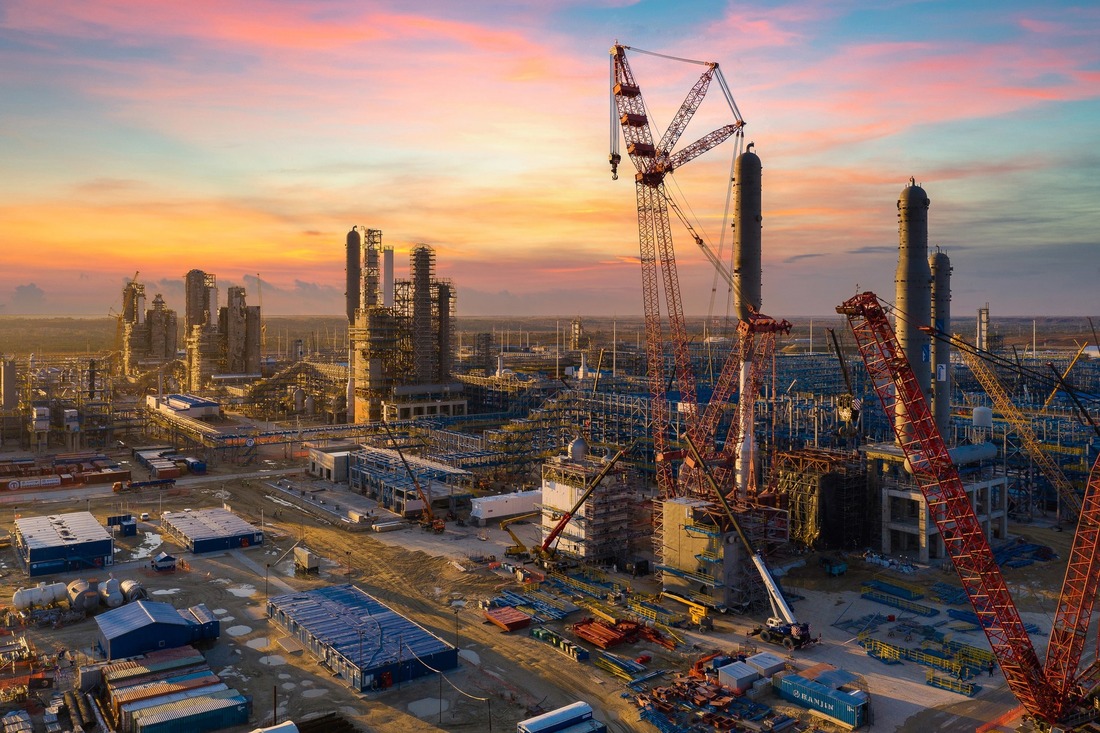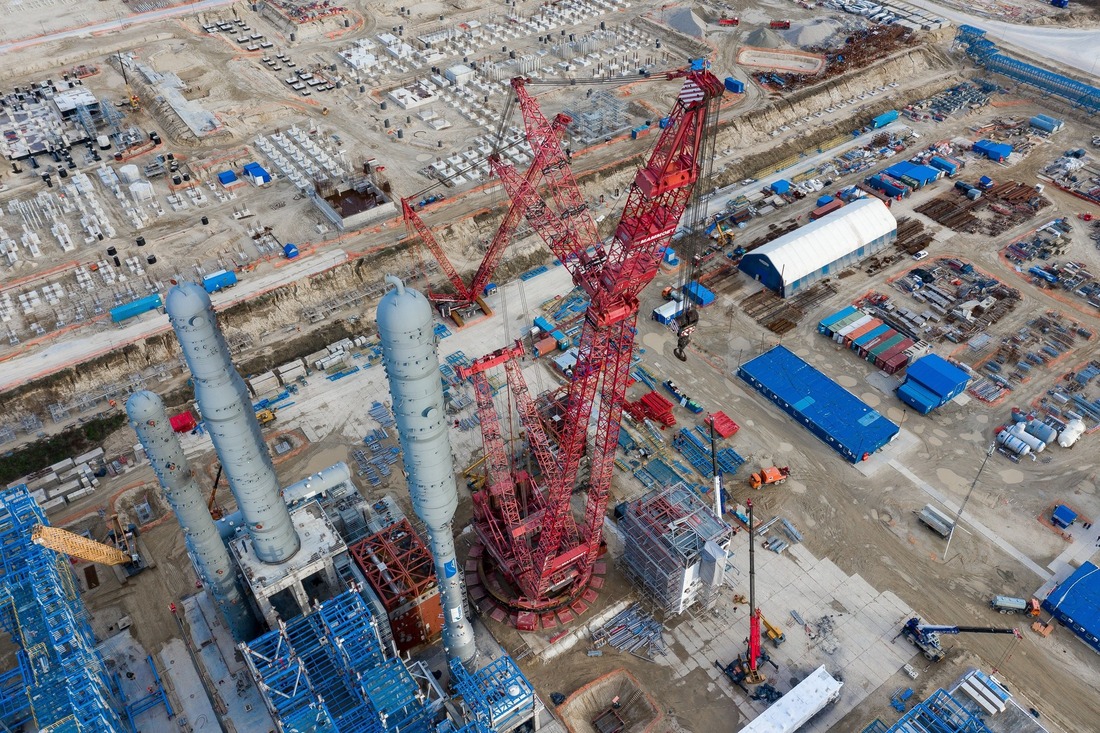Amur Gas Processing Plant: a new enterprise of strategic importance appears in the east of the country
People around the world love to launch balloons filled with helium and do not spend too much time thinking that they are having fun with strategically important raw materials. There is very little helium on Earth, and the demand for it is growing: without this light gas, the production of modern high-tech products is unthinkable. Until recently, the actual monopoly of helium supplies was with the United States. This year, Russia is launching the first two lines of the Amur Gas Processing Plant. And by late 2024, this plant will operate at full capacity, and Russia will become one of the key global players in the market of the so called «solar» gas. What the «helium revolution» will bring to the country and the region is analyzed by EastRussia news agency.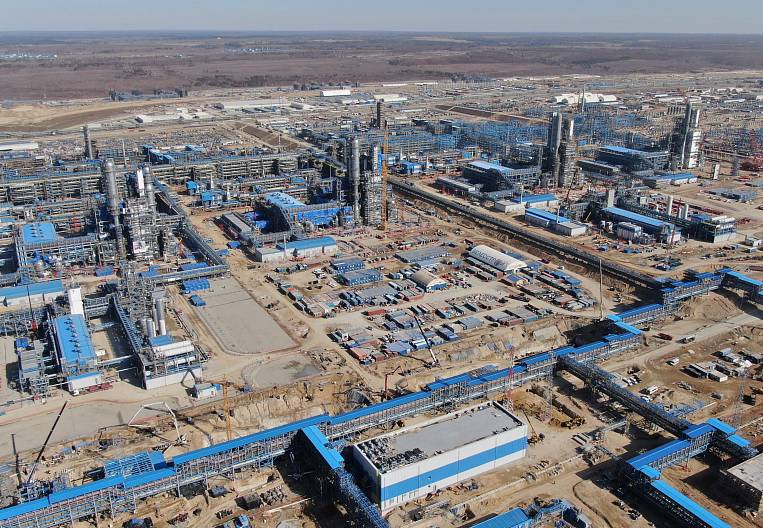
Amur Gas Processing Plant.
Solar gas that controls the world
Helium is the second most abundant element in the universe (after hydrogen), but there is very little of it on Earth. It was first discovered on the Sun, and it was decided that it is available only there, hence the name («helium» meaning «solar»). This gas is volatile and left the atmosphere of our planet in prehistoric times, remaining only in underground deposits of natural gas mixed with other gases. It is extracted from there.
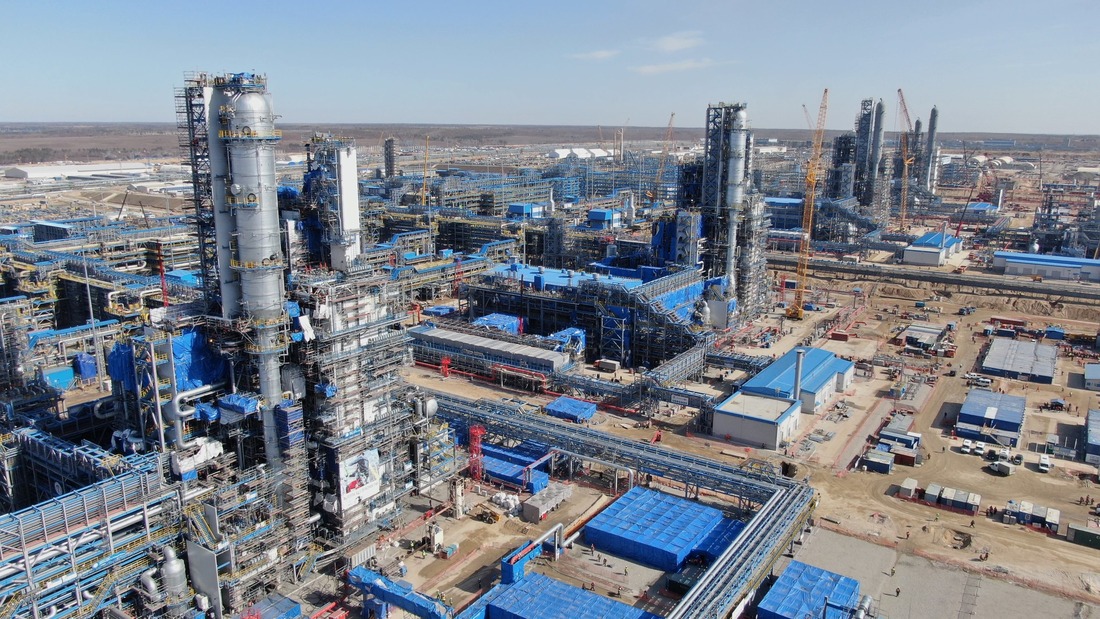
The size of the main construction site of the Amur GPP is about 800 hectares, and it could accommodate 1,100 football fields.
Since the beginning of the 20th century, the largest owner of helium reserves is the United States. A hundred years ago, this country was going to build tens of thousands of military airships. The airships were abandoned but the helium remained. The Federal Helium Reserve, a mine near Amarillo, Texas, holds about 2.8 billion cubic feet of helium. For decades, the helium concentrate has been stored as a strategic reserve; the reserve formally belonged to the American people, and it was maintained by the budget. With the development of semiconductor and superconducting technology, the Cliffside Storage Facility in Texas became a treasure overnight. In 1996, the law on privatization of helium was adopted. From now on, the Bureau of Land Management (the entity that owns the land above the mine) can, at its discretion, put helium from the reserves on the market. So, the «surveyors» became the world's monopolists in the helium market.
Without helium, the production of modern microelectronics, and especially superconducting elements, is unthinkable. It is used in magnetic tomographs, for cooling nuclear reactors, for precision welding, and, finally, in the space industry. In some cases, helium can be replaced by other noble gases, but most often, it is out of competition.
According to Edison Investment Research, by early 2020, 80% of the world's helium supplies were provided by only five facilities: the already familiar US Federal Reserve of Helium (Cliffside), the American oil and gas fields Hugoton and LaBarge, as well as the countries of Qatar and Algeria. A high degree of monopolization makes the market unstable. For example, an embargo was imposed in 2017 on the export of helium from Qatar, which caused the world market to simultaneously lose 30% of supplies. In 2019, when factories in the United States and Algeria went into preventive maintenance, this led to a deficit of more than 40% of demand, according to Kornbluth Helium Consulting. Recently, the US authorities decided to release helium from the reserve only to state consumers: the last auction will be held in 2023. This will increase the tension in the market. The US itself still consumes less helium than it produces. According to the US Geological Survey, domestic consumption in 2020 amounted to 40 million cubic meters, while the country exported 100 million cubic meters (while according to the agency, its own production from natural gas in the United States was about 61 million cubic meters, the rest was covered by the reserves from storage facilities and other sources). The demand for liquid helium, which is a cryogenic, i.e. super-cold, substance, in 2020 is caused, among other things, by the need to produce and store COVID-19 vaccines that require low temperatures.
Much will change with the launch of the first start-up complex of the Amur Gas Processing Plant, and not only in the Russian market, but in the entire world market. Two process lines will be put into operation, as well as the first of three helium production plants in Q2 this year. The first gas processing plant in the Far East has been under construction since 2015 near the town of Svobodny (Amur region).
When it reaches its full capacity, it will produce 60 million cubic meters of helium, which will immediately put Russia among the largest players in the helium market. Our country produces about 5 million cubic meters of helium per year now; in the near future, its production will grow 13 fold.
Siberian gas, Amur cluster
Amur Gas Processing Plant is being built by Gazprom as part of the Eastern Gas Program. Gazprom Pererabotka Blagoveshchensk LLC (member of Gazprom Group) is the Investor and Owner of the Amur Gas Processing Plant project. In late 2019, President Vladimir Putin and his Chinese counterpart Xi Jinping launched the Power of Siberia gas pipeline which will deliver more than 1 trillion cubic meters of gas to China over the next 30 years.
The key point of the agreements is that only purified methane will be sent from Russia to China. All associated fractions will be extracted from natural gas for further processing on the Russian side. It is this operation that will be performed at the Amur Gas Processing Plant.
By the time it reaches its design capacity, the Amur Gas Processing Plant will annually produce about 38 billion cubic meters of commercial methane, 60 million cubic meters of helium, more than 2 million tons of ethane, 1.5 million tons of propane and butane, and 200 thousand tons of pentane and hexane fraction.
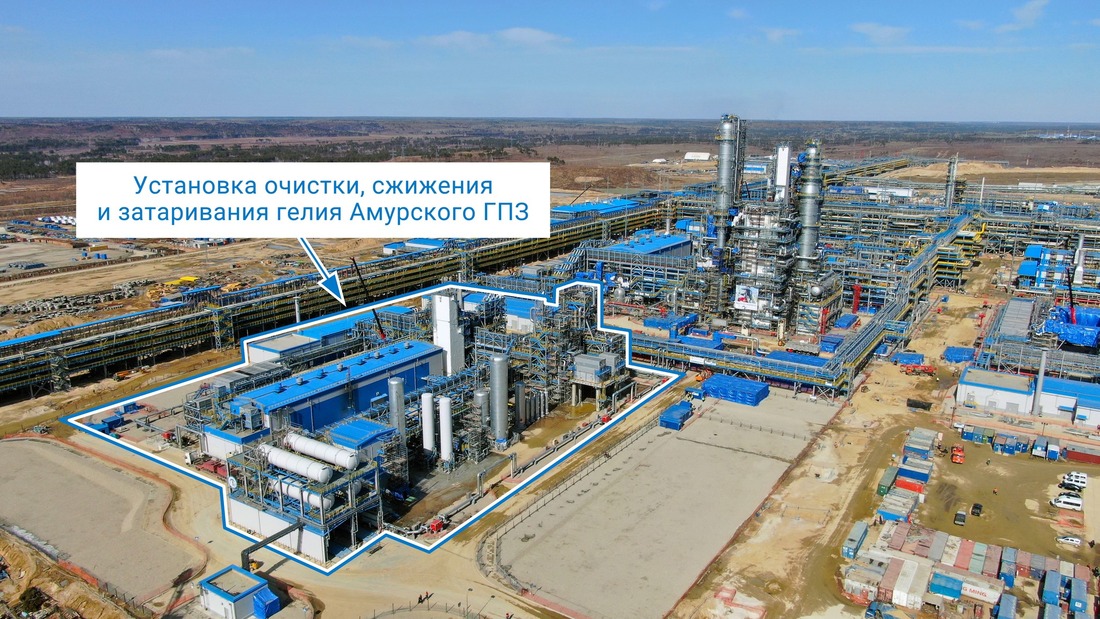
Helium treatment, liquefaction and loading unit of the first start-up complex of the Amur Gas Processing Plant.
SIBUR will purchase some of the products of the Amur Gas Processing Plant (ethane and liquefied petroleum gases) as soon as it finishes building its Amur Gas Chemical Complex (GCC) nearby. The symbolic first pile was driven into the foundation of the plant in the summer of 2020. GCC will become one of the largest complexes in the world: its capacity is estimated at 2.3 million tons of polyethylene and 400 thousand tons of polypropylene per year. Its future products like plastics and polymers are in demand in all sectors of the economy.
The other part of GPP products will be sold on the domestic and international markets. For example, the pentane and hexane fraction is a raw material for high-octane gasoline, rubbers, and solvents. Helium from the Amur Gas processing Plant is supposed to be delivered in a liquid form in isothermal containers to the ports of the Primorsky region. A logistics complex is being built near Vladivostok: it will become the world's largest hub for the supply of liquefied helium to the international market. From there, the cryogenic isothermal containers with the coldest substance on Earth will be exported to China, South Korea, and Japan.
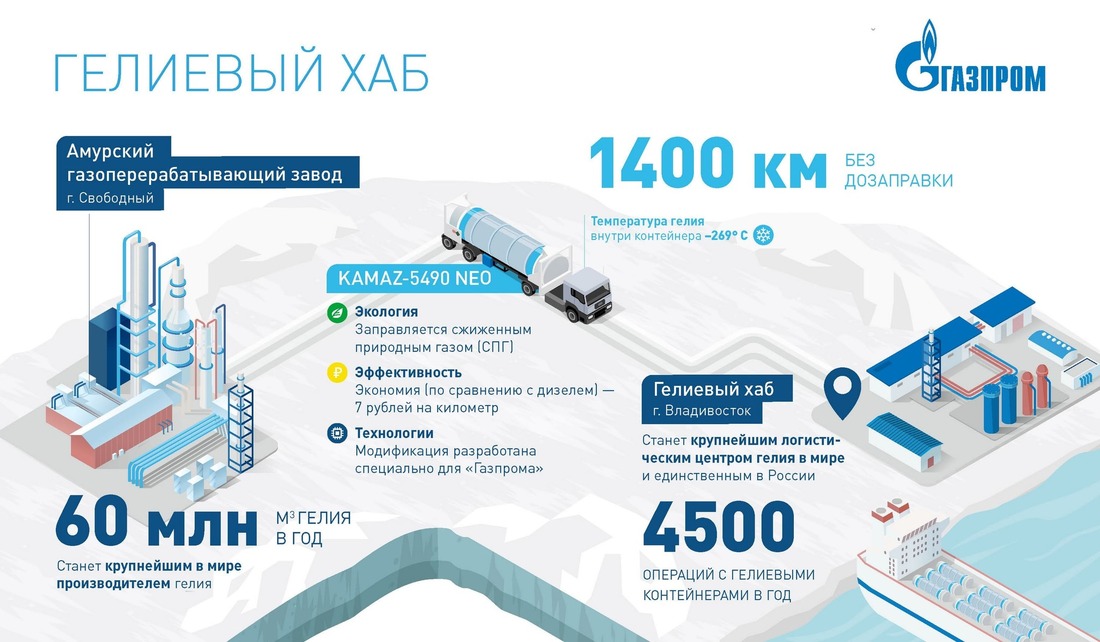
Liquid helium logistics: delivery in isothermal containers from the Amur Gas Processing Plant to the logistics center for servicing helium containers (Vladivostok) and then to the ports of Primorsky region.
A deficit that won't last forever
«Russia made it clear at the start of negotiations with China that the launch of the gas pipeline to China is linked to the advanced processing of the feedgas: we will trade separately methane, other fractions and products from them,» says Stanislav Mitrakhovich, an expert at the Financial University and the National Energy Security Fund. Perhaps, back then ten years ago, it seemed to many that the mentioning of helium in conjunction with methane was nothing more than a negotiating maneuver. «But the situation is changing, and the role of helium in the high-tech industry is increasing,» says Mr Mitrakhovich.
«Today, the helium that is extracted together with the gas at the Chayandinskoye field is separated from the feedgas using a special membrane technology and, in the form of helium concentrate, is sent back to the reservoir for storage,» says Igor Yushkov, leading analyst at the National Energy Security Fund, expert at the Financial University under the Government of the Russian Federation. The reservoir, therefore, is a kind of natural storage of helium. «Of course, it is in Gazprom's interests to capitalize on the helium story. Helium is far from the most common gas in the world, and the demand for it is constantly growing, primarily in the Asia-Pacific countries,» says Mr Yushkov.
The first of the three helium treatment and liquefaction units of the Amur Gas Processing Plant will produce 20 million cubic meters per year. After the launch of the three lines, production will reach 60 million cubic meters, which will change the global «helium landscape».
For comparison: global helium production in 2020 was 140 million cubic meters (compared to 160 million cubic meters in 2019). Capacity of a single Russian enterprise is comparable to production in the United States and exceeds the capabilities of Qatar (45 million cubic meters), Algeria (14 million cubic meters), and Australia (4 million cubic meters).
In the Asia-Pacific region, Russia has no competitors actually: the field at the Darwin plant in Australia is nearing depletion, says Roland Kuchler of Uniper Global Commodities. At the same time, it is in the Asia-Pacific Region that the most acute demand is present since it microelectronics production plants are concentrated in China, South Korea, Taiwan and Japan. «We see that many factories are being built, and they will soon be put into operation. The demand for helium will only grow, » says Mr Kuchler.
At the same time, one should not forget that helium is still not the main component of the Power of Siberia project, recalls Mr Yushkov. «According to the agreements, China pays only for methane. We could supply them with gas as it is produced, with all the fractions: they will buy and, most likely, just burn it. But this is not profitable. We intend to extract valuable fractions from the feedgas, and not only helium, to send them to the SIBUR plants under construction, to process them and, thus, to leave added value in the country,» says Mr Yushkov. Negotiations with China, of course, were centered mainly around methane, Mr Mitrakhovich agrees, but the microelectronic industry is concentrated is in the countries of the Asia-Pacific region, and therefore, potentially, the main consumers of helium, he adds.
Transformation of the outskirts
So, an industrial region is being established in the Russian Far East which will be the focus of the new economy. How does this change life in the Amur region itself?
More than 30 thousand construction workers are involved at the site of the Amur Gas Processing Plant now. When the plant reaches its design capacity, it will employ about 2.5 thousand members of the permanent operating personnel. This is a very noticeable figure for the small town of Svobodny which has 20 thousand employees and 54 thousand residents. Gazprom promises that every GPP employee will be provided with a competitive salary, medical insurance and corporate training. Best gas professionals from other regions of the country come here today. The official website of Gazprom Pererabotka Blagoveshchensk LLC has vacancies: industry professionals are being waited for on the Amur River.
Svobodny, a single-industry town that plunged into depression in the 1990s, is gradually being transformed. New housing, communications, household and medical infrastructure are being built. A residential district for 5 thousand residents with a school, a kindergarten, a polyclinic, a community hall, and a sports complex will be built for the staff of the Amur Gas Processing Plant. The project provides for construction of more than 165 thousand square meters of housing and 100 thousand square meters of social facilities. Among the key facilities are 42 apartment buildings and 36 townhouses, with a total of 1,688 apartments. The kindergarten can accommodate 350 children, the school is designed for 900 students, and the polyclinic is designed for 290 visits of adults and children. Construction of the social infrastructure is planned to be completed in 2024.
Arrival of a large industrial company in the region also means an influx of funds into the social sphere. During COVID-19 pandemic, the companies involved in construction of the Amur Gas Processing Plant took over the construction and equipment of anti-COVID hospitals. In 2020, Gazprom Pererabotka Blagoveshchensk LLC allocated more than 21 million rubles for charitable purposes: procurement of equipment for boarding schools, computer science classes and robotics clubs, and assistance to disabled people and war veterans. Before that, certain funds were invested in the educational infrastructure of the region. A dedicated Gazprom class has been operating for several years in one of the schools of the town: in case of successful completion of the training, it is easier to get a job at GPP. At the beginning of the project, Gazprom Pererabotka Blagoveshchensk invested in equipping the Amur Technical College which now has majors that are in demand in the gas processing industry. Amur State University was helped in equipping its laboratories used by the students who are also studying the new Chemical Technology major for the region.
«Projects such as the Amur Gas Processing Plant form the main inflow of investment to the region, thanks to which the necessary social and economic and industrial infrastructure is being created here and now,» says Lyudmila Starkova, Minister of Economic Development and External Relations of the Amur Region.
About 90 billion rubles of the budgetary funds will be invested in the development of the infrastructure of the town of Svobodny, including 32 billion rubles from the federal budget, the administration of the Amur region explained. The region has already felt the influx of tax payments from construction of the plant, and this amount is growing. If at the commencement of construction back in 2014, the regional budget received about 4.8 million rubles; in 2020, it received almost 8.2 billion rubles. In just 7 years, the budget of the Amur region received over 17.5 billion rubles thanks to the Amur GPP. Most of this amount is formed through personal income tax and corporate income tax, the regional administration explains.
According to a sociological survey conducted in December 2020, 80% of the residents of Svobodny and nearby settlements said that they have a positive attitude to construction of the plant. 91% of respondents believe that the Amur Gas Processing Plant is important for development of the region because construction provides jobs to the local residents, increases their incomes and reduces the outflow of young people. And the taxes paid by the investor and its contractors help to develop the local infrastructure.
Source: EastRussia news agency

